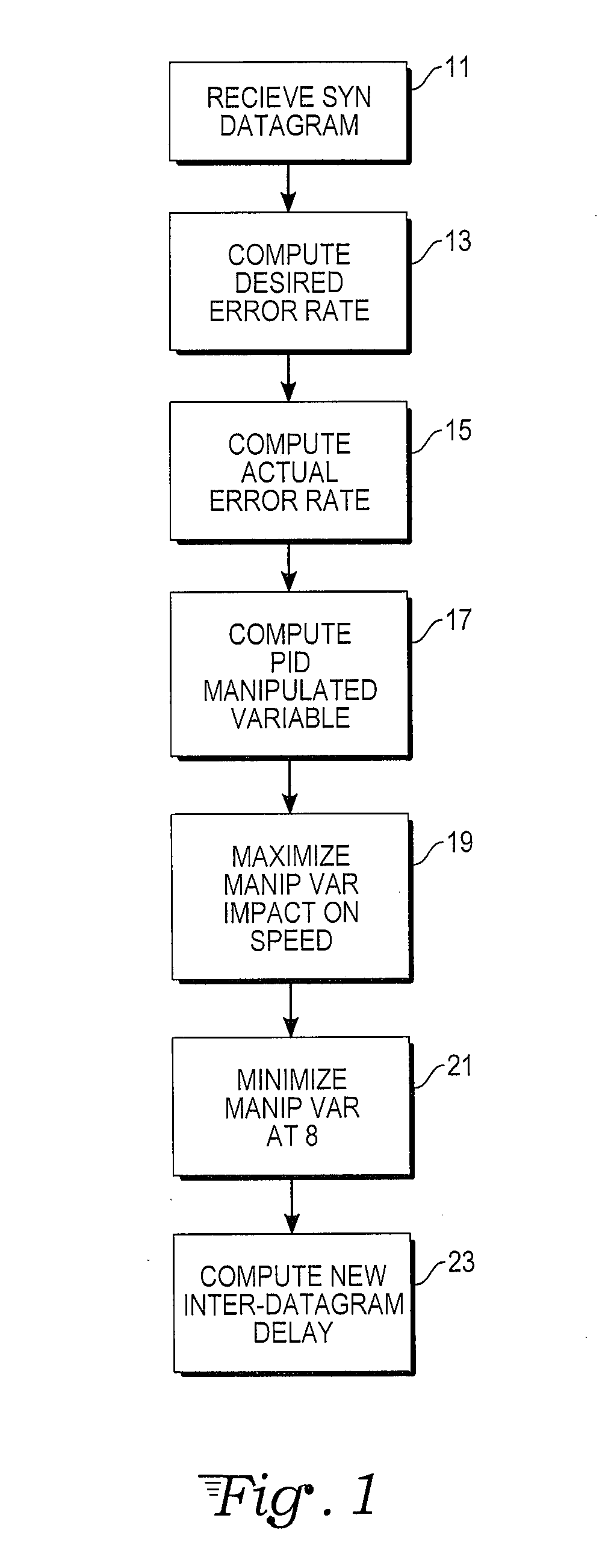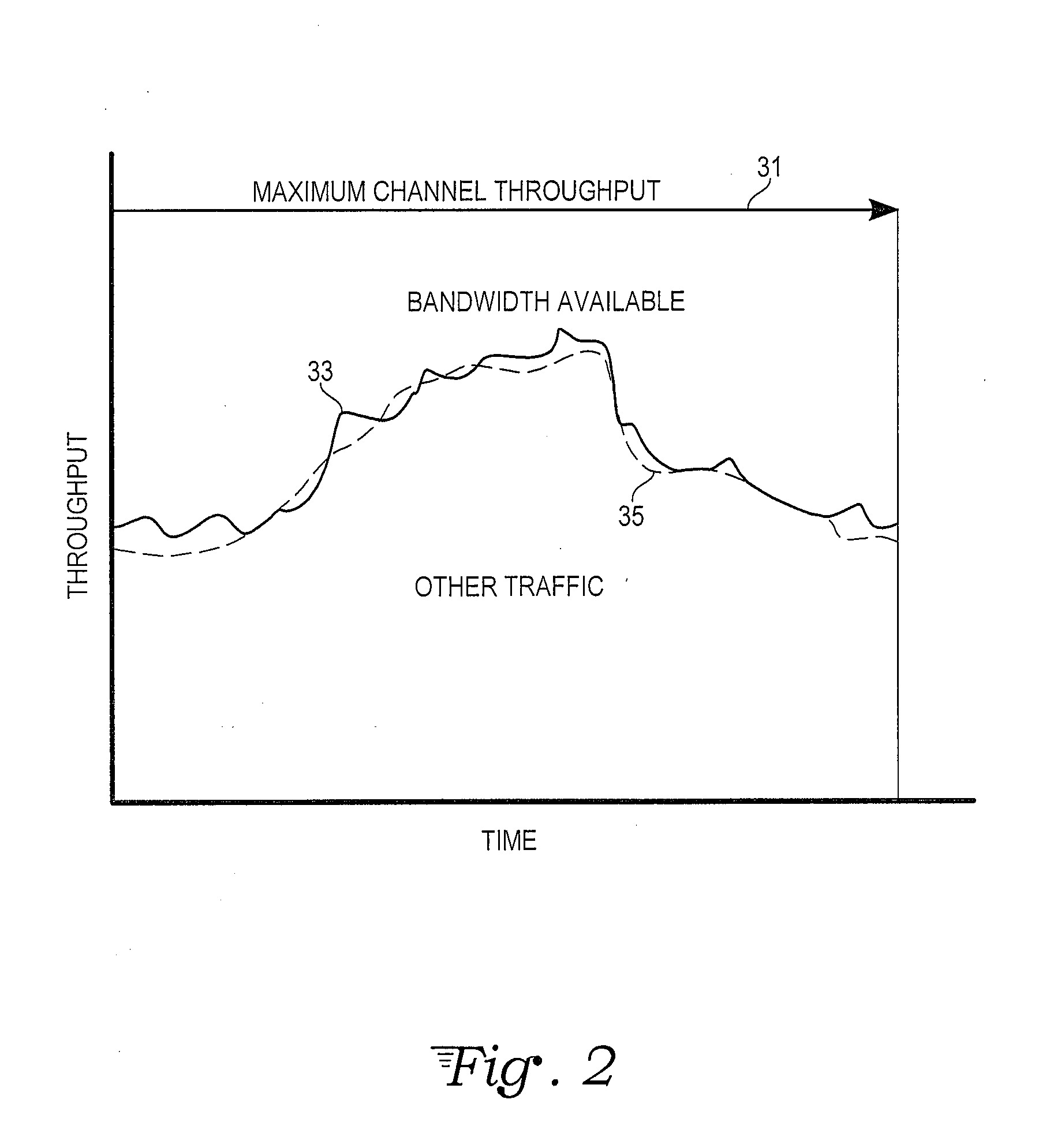Telecommunications protocol with PID control of data transmission rate
a technology of telecommunications protocol and data transmission rate, which is applied in the field of computer data transmission system and method of data transmission over network, can solve the problems of high network latencies, substantial datagram loss or corruption, and network experience regularly recurring loss of communication, and achieve the effect of minimizing the overuse of redundancy
- Summary
- Abstract
- Description
- Claims
- Application Information
AI Technical Summary
Benefits of technology
Problems solved by technology
Method used
Image
Examples
Embodiment Construction
[0015]Feedback based control systems are the basic mechanism for most control systems. Usually, feedback systems are based upon a mathematical relationship between error and a process variable (or sets thereof in the multidimensional case). For purposes of this disclosure, a proportional-integral-derivative (PID) control system is used, but it should be apparent to those having skill in the associated arts that other suitable mathematical or algorithmic based control processes could be used to achieve the same basic ends. The key is the use of feedback and storage of state to control ongoing operations.
[0016]Proportional-integral-derivative (PID) control is most commonly used in industrial applications to stabilize the behavior of machines. Basically, PID controllers monitor the error between a process variable (e.g., speed) of a machine and a desired setpoint and then adjust control inputs to minimize the error. The basis of a PID system is feedback—output a value, measure error an...
PUM
 Login to View More
Login to View More Abstract
Description
Claims
Application Information
 Login to View More
Login to View More - R&D
- Intellectual Property
- Life Sciences
- Materials
- Tech Scout
- Unparalleled Data Quality
- Higher Quality Content
- 60% Fewer Hallucinations
Browse by: Latest US Patents, China's latest patents, Technical Efficacy Thesaurus, Application Domain, Technology Topic, Popular Technical Reports.
© 2025 PatSnap. All rights reserved.Legal|Privacy policy|Modern Slavery Act Transparency Statement|Sitemap|About US| Contact US: help@patsnap.com



